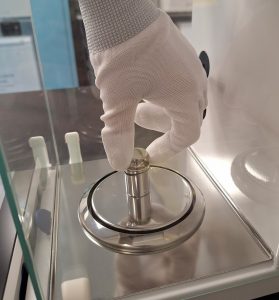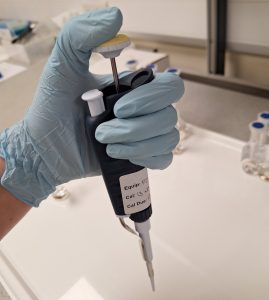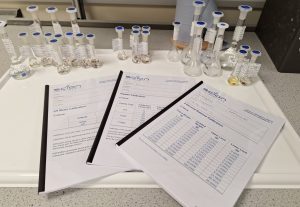The Importance of Lab Equipment Calibration
What Is Calibration?
Lab Equipment Calibration aims to check the accuracy of the instrument or device being tested as well as determining the traceability of the measurement. During calibration a report is generated which shows the error in measurement.
The device and or instrument may also be repaired during this process if it if found to be out of calibration.
What calibration entails depends on the device or instrument that is being calibrated – for balances calibration means determining the difference between the reference mass and the reading on the balance display. For pipettes, calibration is determining the differences between the mean volume of water dispensed and the volume that is shown on the display. Calibrating pH meters means adjusting the device to give a specific reading with a solution of a defined value.
What Are The Benefits of Calibrating Laboratory Equipment?
Lab equipment calibration maintains the accuracy and integrity of results as well as extending the lifespan of devices and instruments. Regular calibration of equipment also reduces hazards within the workplace – as it allows for the earlier detection of faulty equipment.
Calibrating the laboratory equipment is essential for minimising uncertainty in measurements as it ensures the accuracy of test equipment.
Laboratory Balance Calibration
Laboratory balances need to be calibrated regularly in order to ensure accurate results. The frequency of which this needs to be performed will depend on the laboratory in which the balance is located. This could either be at the beginning of everyday or once a week, for example.
How is a balance typically calibrated?
- The balance should be placed on a level and stable surface which is also free from any draughts.
- The balance should be tared/zeroed.
- Weights of a known mass are then used and the weights recorded.
- The actual weights are then compared to acceptable weights (within a certain percentage of error).
If the balance passes – i.e. it is within the acceptable pre-set percentage error, then it may be used for laboratory work. However, if the actual weights are out with the pre-set criteria, then this should be investigated and the balance removed from use in the laboratory.
For our research we use sister company Precisa’s laboratory balances. Explore all Precisa has to offer.


Pipette Calibration
Pipettes need to be calibrated to ensure the accuracy of the volume of liquid that is dispensed which is often crucial to ensure the outcomes and reproducibility of experiments.
Most laboratories will check pipette calibration every 3 months – pipette calibration is considered to be an integral part of good laboratory practice (GLP).
Water density is 1 g/mL at room temperature and pressure, therefore a volume water can be dispensed and weighed to determine if the pipette is functioning properly.
How to Calibrate a Pipette:
- An empty beaker is placed on a balance and the balance tared/zeroed (it is important that the balance is calibrated before attempting pipette calibration).
- A set volume of deionised water is then dispensed into the beaker on the balanced and the mass recorded.
- This is repeated for the same volume a preset number of times – typically between 5 and 10 times.
- The accuracy is then calculated using the equation: A = 100 × Vavg/V0 where A is the accuracy of the pipette, Vavg is the average volume dispensed and V0 is the volume displayed on the pipette (the volume you are trying to dispense).
pH Meter Calibration
pH meter calibration is the process of adjusting the meter to a set pH using a solution called a buffer. pH electrodes will change over time and therefore needs to be calibrated.
There are different types of calibration for pH meters, one point, two point and multi point calibration – this is an indication of at how many points on the pH scale the device is calibrated.
If a large range of the pH scale is being bracketed it is best to utilise a multipoint point calibration. It is important to use fresh pH buffers every time the meter is calibrated as the solutions need to be of known value.
How do we perform a multi-point calibration?
- Select three pH buffers (using a range of pH’s – 4,7 and 9 is typical).
- The pH meter should then be put into calibration mode – your pH meter manual will tell you how to do this.
- The pH meter is then calibrated to each pH according to the manuals instructions.
- This involves dipping the electrode into the buffer solutions of the correct pH. Once the reading on the pH meter is stable the pH meter is then set to the pH of the corresponding buffer.
pH meter electrodes a susceptible to changing over time – which is why calibration is important.

Conclusions
It is imperative that laboratories calibrate their equipment regularly in order to maintain the accuracy, standardisation and repeatability of their results. Lab Equipment Calibration can also help ensure the safety of laboratory staff as well as reducing equipment downtime by catching faults early.
Download the Technical Note
To download a PDF copy of this technical note on good laboratory practices, use the following link: The Importance of Laboratory Equipment Calibration
